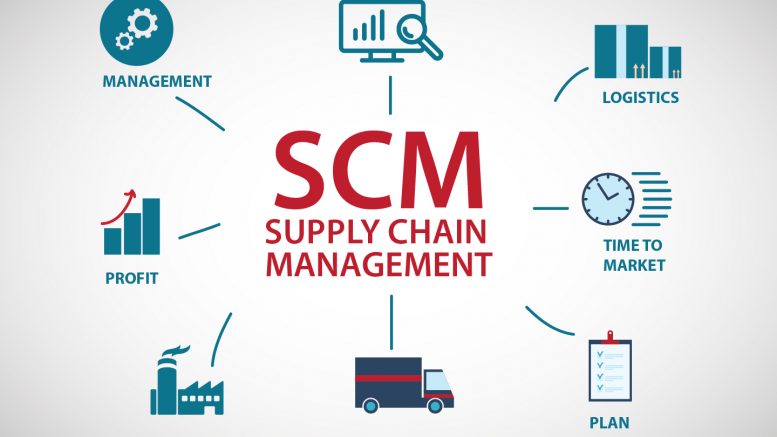Supply Chain Management essentially serves as the backbone to any thriving economy. From the meticulous production of goods and services to the seamless delivery to eager consumers, it’s undoubtedly clear that supply chain management not only contributes to employment opportunities but also provides optimal value to customers in return. Commonly abbreviated as SCM, Supply Chain Management refers to the systematic and unique process that incorporates product development, production, sourcing and logistical networks to provide exceptional products and services to esteemed customers. It is such an important part of a business that companies often hire expert consultants to help with the process.
Unknown to most people, Supply Chain Management strives at fulfilling two critical components:
• Empowering Vital Components of the Supply Chain.
At its core, Supply Chain Management strives at ensuring that each product reaches the final consumer through the concerted efforts of multiple institutions. Collectively known as the supply chain, such enterprises diligently play an integral role in the production and subsequent delivery of high-quality products and services.
• Managing Effective Control Of Each Critical Stakeholder
Despite the existence of supply chains for decades, few enterprises successfully managed to achieve optimal potential based on inefficiencies and laxities from various individuals. As a result, the entire process exhibited disjointed results and adverse repercussions. To address this situation, concerned companies harnessed resources to develop oversight on the supply chain to uphold seamless service delivery through effective communication and prompt distribution of goods.
5 Components of Supply Chain Management
1. Planning
Planning aims at finding a unique strategy for the efficient management of resources tailored to meet consumers’ demands. To achieve this, proponents must develop metrics to evaluate the supply chain to safeguard its efficacy, affordability and high-quality delivery to customers.
2. Sourcing
As the name suggests, sourcing fundamentally refers to the systematic identification and selection of suppliers to deliver the initial materials needed to develop intended products and services to the end consumers. At this stage, it is imperative for business owners to prepare costs, delivery and flexible payment options from the onset. Such factors are crucial in developing synergetic and lasting relationships with suppliers. More importantly, business owners must implement monitoring strategies to ensure the consistent supply of high-quality raw materials.
3. Manufacturing
The Manufacturing process comprises of the scheduled activities pertaining to testing, production, packaging and subsequent delivery to the target audience. Often, companies can consider outsourcing production to an external enterprise especially when they possess advanced technology. By implementing this option, companies must regularly interface with the manufacturer to ensure that assigned projects are aligned with the presented raw materials during the production process.
4. Delivery
The delivery process acts as the vital link between manufacturers and consumers. In essence, it entails synchronizing receipt orders from customers, developing a modern network of warehouses, selecting competent carriers to deliver products to consumers and creating an invoice system to facilitate swift payments. Manufacturers are strongly advised to exercise due diligence when setting the delivery network to not only ensure prompt delivery of goods but also elevate their status as reliable business partners.
5. Returns
Widely considered to be the most challenging aspect of the supply chain management, dealing with returns isn’t something that should be taken lightly. Preferably, companies must develop efficient networks for receiving defective products from unsatisfied customers. In such instances, manufacturers must revisit their drawing board and ascertain the source of the deficiency. Whether it’s damaged or stale goods, manufacturers must address such problems with finesse and implement rigorous systems to sieve such products beforehand.
Predictions for the Future of Supply Chain Management
While taxes and death are the only certain concepts, predicting the future of supply chain management can be a tall order. Often, stakeholders strive at blending the past and present since supply chain management cannot exist in isolation. Through this perspective, stakeholders can obtain a glimpse into the potential transformation in supply chain management.
Based on findings by CAPS Research from over 400 supply management experts, it is evident that external forces of change coupled by changing business strategies played an essential role in determining the industry’s future perspective.
• External Forces of Change
Emerging changes such as fluctuating raw material prices, government regulations, and increased competition can substantially affect the supply chain management. Through increasing raw material prices, consumers should be prepared to fork out more cash to obtain the final product. Emerging government regulations such as increased taxes can undoubtedly force manufacturers to increase product prices even though customers might hesitate to meet such exorbitant costs.
• Business Strategy
While business strategies represent action plans and long-term goals of an institution, manufacturers must strive to ensure that the company’s mission is aligned with customer-orientation and reflects the desired goals and objects. For starters, manufacturers can achieve high-quality service delivery by reducing production costs and setting affordable product prices. Alternatively, they are in a unique position to improve flexibility according to customer demand by exercising proactive measures in a changing market environment.
Conclusion
In a nutshell, supply chain management’s success cannot be realized without the concerted efforts of each stakeholder. This represents a monumental transformation in business processes tailored to achieving efficacy to the delight of consumers.



Be the first to comment on "Dissecting the Role Played By the Supply Chain Management and its Future Potential to Meeting the Ever-Changing Customer Needs"